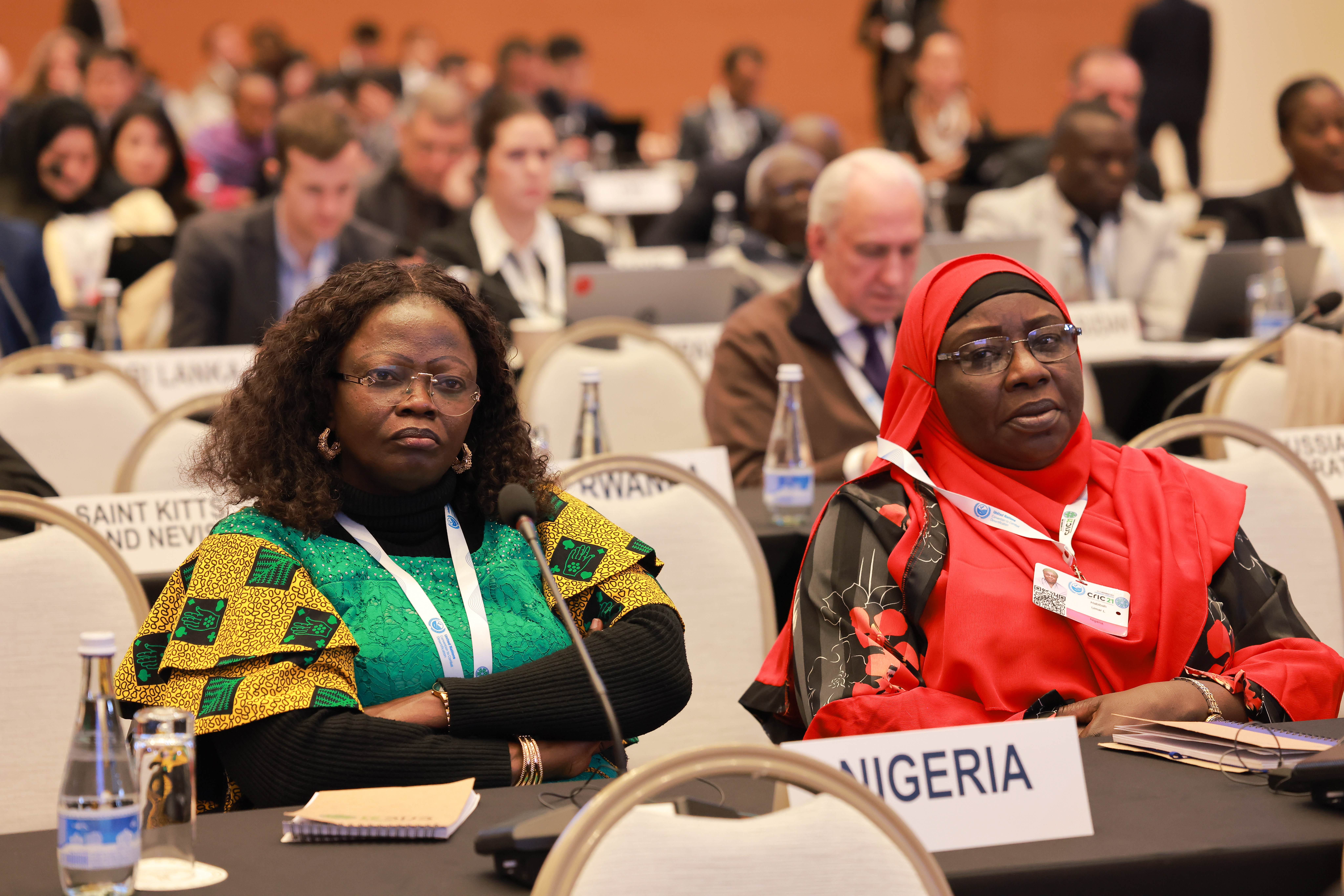
On November 15, as part of the 21st session of the Committee for the Review of the Implementation of the United Nations Convention to Combat Desertification (CRIC-21 UNCCD) at the Silk Road Samarkand Congress Hall, a plenary session was held under the chairmanship of the Minister of Ecology, Environment, and Climate Change of the Republic of Uzbekistan, Aziz Abdukhakimov.
The event was attended by the Minister for Agriculture, Fisheries, Food Security and Rural Development, Saint Lucia Alfred Prospere, the Chair of UNCCD COP15, Alain Richard Donwahi, the First Deputy Minister of Environment, Water, and Agriculture of the Kingdom of Saudi Arabia, Osama Ibrahim Faqeeha, the Executive Secretary of UNCCD, Ibrahim Thiaw, and the Deputy Secretary-General of the OECD, Huseyin Avni Bicakli.

"For Uzbekistan, the issue of sand and dust storms, which are becoming increasingly frequent and intense, is more relevant than ever. This is due to the fact that a significant part of the country's territory consists of steppes and deserts. To address these problems, comprehensive actions need to be taken at all levels. President of Uzbekistan, the highly respected Shavkat Mirziyoyev, personally oversees this issue and instructs the Cabinet of Ministers to implement effective policies and measures to achieve land degradation neutrality, — noted A. Abdukhakimov in his opening speech. — Together with my colleagues - Ministers of Environment from Central Asian countries, we have created an effective platform. We discuss pressing issues, exchange opinions in a messenger. Today, I propose expanding this platform and uniting a broader circle of politicians from neighboring regions".
As part of the high-level event, a meeting of ministers and leaders in the field of ecology from various countries took place, along with an interactive dialogue involving representatives of governments, UN agencies, and international organizations. Participants had the opportunity to deliver brief speeches and ask questions to the speakers.
"The sight of dark clouds of sand and dust sweeping everything in their path and turning day into night is one of the most awe-inspiring spectacles in nature. This dangerous phenomenon leads to chaos everywhere - from North and Central Asia to sub-Saharan Africa, — said the Executive Secretary of the United Nations Convention to Combat Desertification, Ibrahim Thiaw. — Dust and sand storms pose a serious challenge to sustainable development. However, they are both exacerbated by human activity and can be mitigated through human actions".
In turn, the head of the laboratory for the study of surface water quality at the Research Institute of Hydrometeorology, Nishonov Bakhriddin, emphasized the significance of modern air pollution monitoring systems.
"According to research, Central Asia and China rank second globally (after the Sahara Desert) in terms of dust emissions into the atmosphere - about 20% of the total. In Uzbekistan, in order to monitor dust storms, the hydrometeorological network is equipped with automatic meteorological stations and automatic stations for monitoring air pollution, which allow real-time monitoring of visibility range and concentrations of dust and fine particulate matter (PM1, PM2.5, PM10) in the atmospheric air of cities and settlements. Strengthening the capacity in monitoring and predicting dust and sand storms will contribute to reducing the negative consequences of this phenomenon."
It is worth noting that according to the United Nations Convention to Combat Desertification (UNCCD), sand and dust storms are an underestimated problem that is currently occurring "significantly" more frequently in certain locations worldwide.
Two billion tons of sand and dust, equivalent in weight to 350 Great Pyramids of Giza, are released into the atmosphere annually. UNCCD experts estimate that over 25% of this phenomenon is attributed to human activity. The damage caused in countries ranging from North and Central Asia to sub-Saharan Africa, the health impact of which is still poorly understood.
In its Sand and Dust Storms Toolbox and accompanying toolkit, the UNCCD, FAO, and partners provide recommendations on approaches and methodologies for data collection and assessment of sand and dust storms, monitoring and early warning systems, impact mitigation and preparedness, as well as mapping sources and mitigating the consequences of anthropogenic sources at subnational, national, regional, and global levels.














